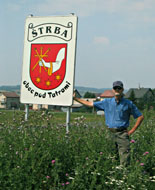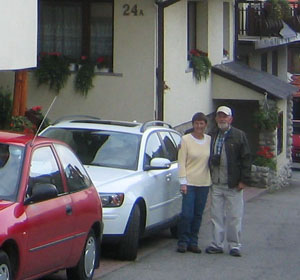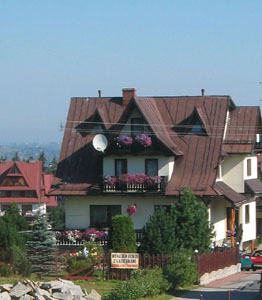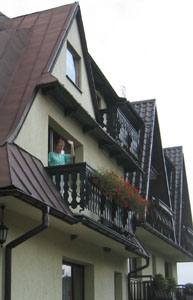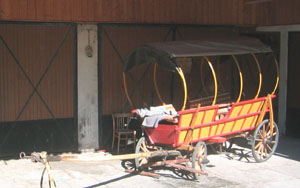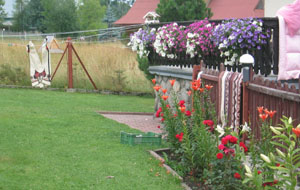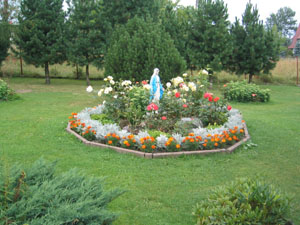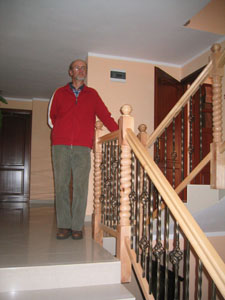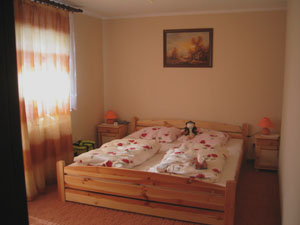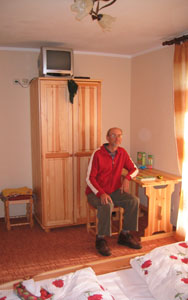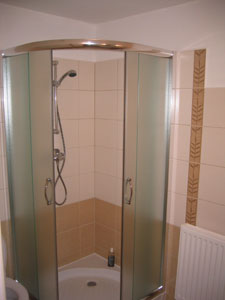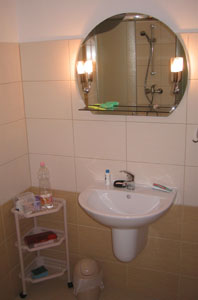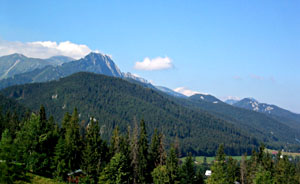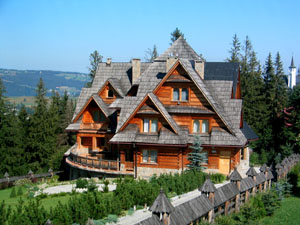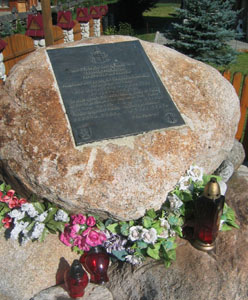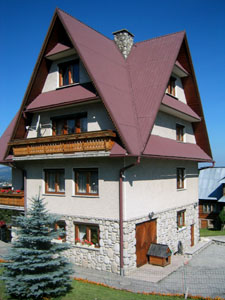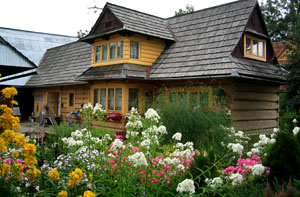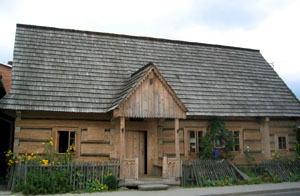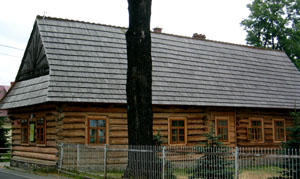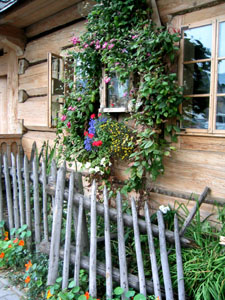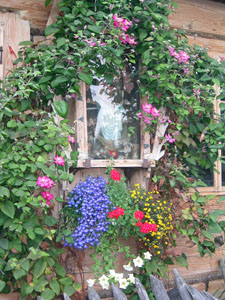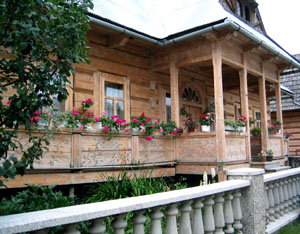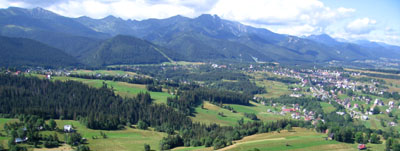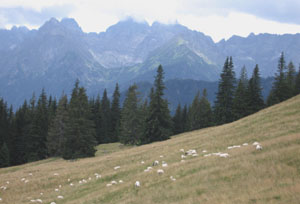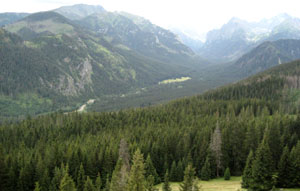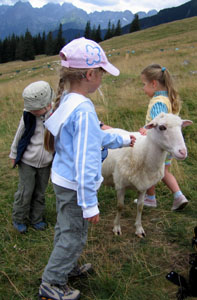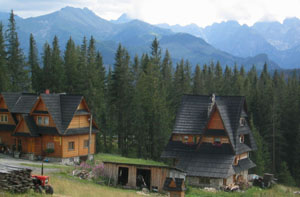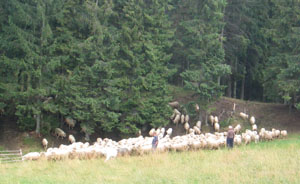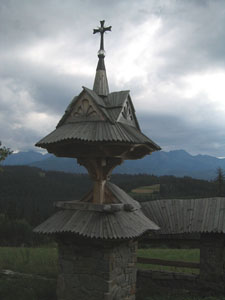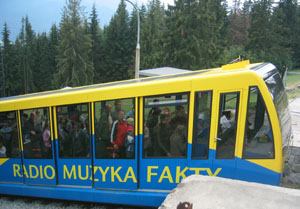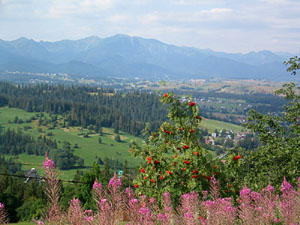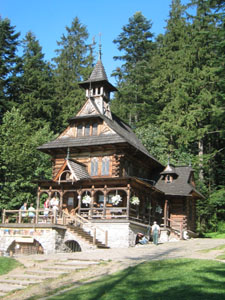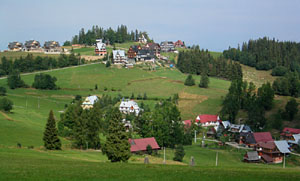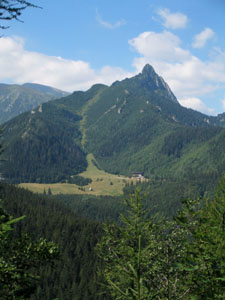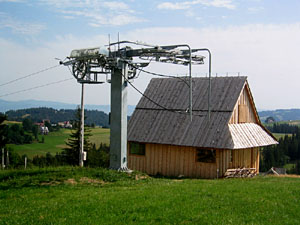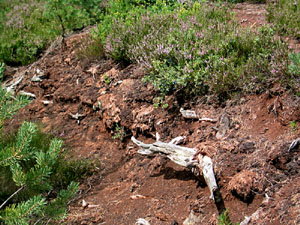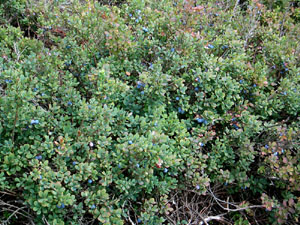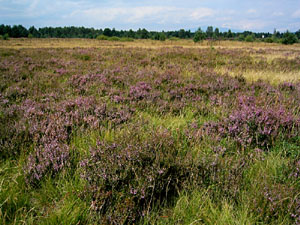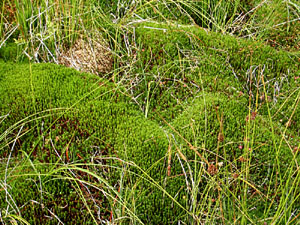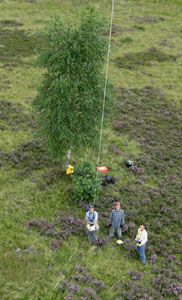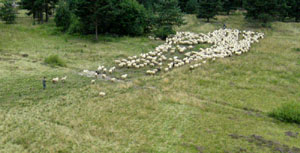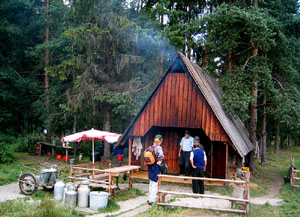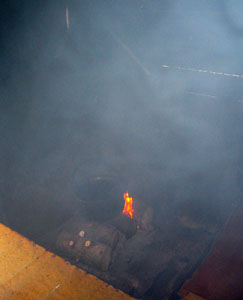| The main cast of characters is shown below. A native to the area is on the right and the visitors to the region, on the left. Ryszard Zabielski, Jim, Maria Górska-Zabielska, and Andrzej Ber were a talkative group, while Mr. Boar was basically unresponsive. We understand his colleagues are just wild when you encounter them anywhere outside of the Zakopane National Park museum!
|
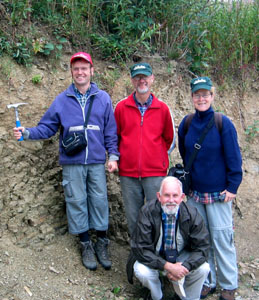
|
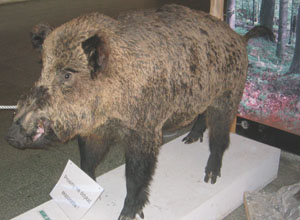
|
|
Can you tell the season of our visit by the clothing? If you were thinking end of July and beginning of August, then you are right. Our friends and family from home have been reminding us why we came to the mountains in summer, when they speak of triple digit Fahrenheit temperatures in Kansas!
|
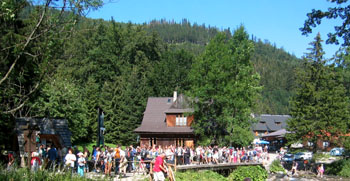
|
The cable car in this area is closed for rennovation, but this did not detour people from taking their mountain vacation to Zakopane, Poland. If you did not believe this was a popular tourist destination, check out the astounding number of people waiting in line to enter the park for a day of hiking.
|
|
...Or were the crowds of people waiting to catch a glimpse of the famous Polish-American kite flying crew in action? Realistically, people rarely look up to the sky when hiking a mountain trail, and it seemed that most people were unaware of our presence. They were more likely looking down to navigate the rocky path and looking ahead for those beautiful vistas.
|
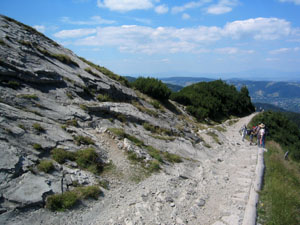
|
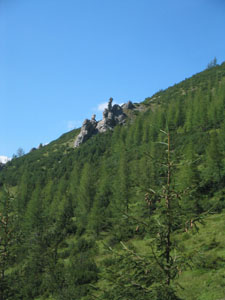
|
|
It was nearly a two hour hike to find a clearing in the forest and an area open with a favorable wind speed and direction. Images below show us stepping off the path and preparing the kite for flight. An additional colleague, Andrzej Iwanow, joined us on this day and together we made a fine international kite and camera crew.
|
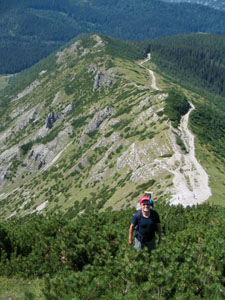
|
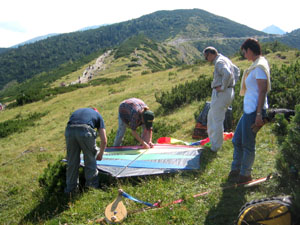
|
|
Preparations for our Slovakian adventure and specifically for this trip to Poland began months earlier though. Jim applied and was awarded a grant, SAIS, which gave us the opportunity and means to visit Slovakia. He immediately contacted our friends in Europe, who helped to arrange accomodations and scout out sights of interest. For our Polish colleagues, several months were needed to reserve a place to stay in this desirable tourist destination and to go through appropriate people and governmental agencies in order to gain permission for us to enter Tatra National Park, step off the tourist trails, and fly a kite for our work! Before going in the field, we picked up the official stamped documents and presented them at park entrance booths.
|
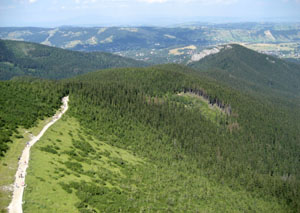
|
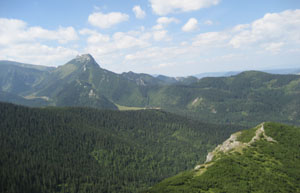
|
|
It all seemed easy once the kite lifted the camera. Our perspectives broadened and you can see the trail that brought us here. Many have come before us. The peak shown in the right image is topped with a cross, which provides religious comfort and a remarkable architectural feat to citizens and vistors in the region.
|
|
The camera can look back to the ground too and see the people moving along the trail. If you look carefully at this picture, you can see a bright spot in the right of the image. This is known as a hot spot or opposition effect. This phenomenon occurs when the sun and camera are in direct alignment with the ground. When the camera engages for a picture in this position, no shadows result. Thus, the area looks brighter than the surroundings that are shadowed or seen from some angle away from direct alignment with the sun.
|
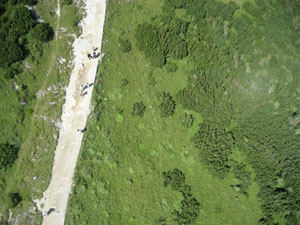
|
|
But then the camera and kite move higher. We see a panorama of mountains and the valley in which Zakopane is situated. This view toward the park entrance is breathtaking and visual information speaks for itself! It is easy to understand why people are attracted to hiking and kite flying in the mountains.
|
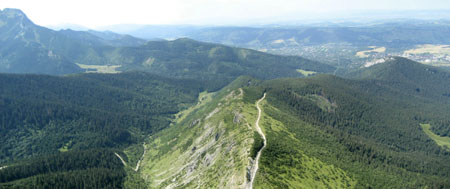
|
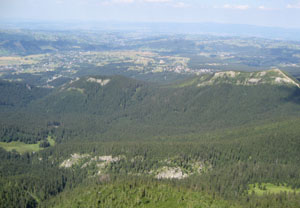
|
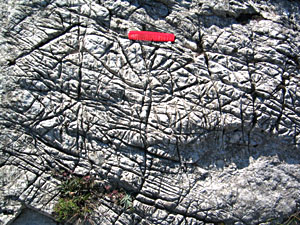
|
While it is great to get the big picture with kite aerial photograhy, we gather information close to the ground also. As we look down, we see Triassic dolomitic limestone. Although this uplifted former ocean floor is resistant enough to form many of the Alps and Tatra mountain peaks, in places it is fractured, weathered, and polished rock that resembles the skin of an elephant!
The comb in the picture is for scale and is approximately 12˝ cm (5 inches) long.
|
|
In addition to bedrock, there are many wildflower species to enjoy. Below are two protected plant species. To the left, eidlwiess with white fuzzy leaves and tiny yellow flowers. This plant is native to the Himalayan Mountains and imported many years ago to the Alps and Carpathians. The flower to the right is a white and dark purple, nearly black, delicate flower that we have yet to identify.
|
|
|
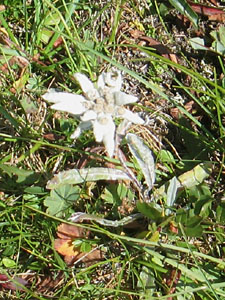
|
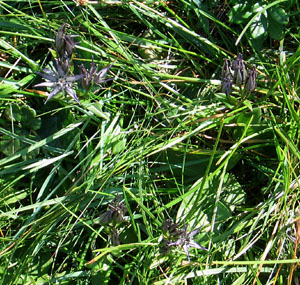
|
|
One last picture looking south and into the sun, toward Slovakia. The view shows a beautiful U-shaped glaciated valley and tree-line in the High Tatras. The wind did not last forever, but the kite flyers felt the success of their work! This extreme KAP was a great accomplishment for the high mountain conditions and unpredictable winds.
|
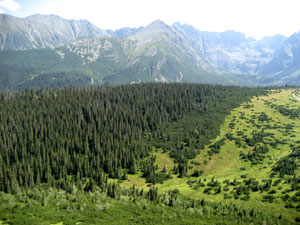
|
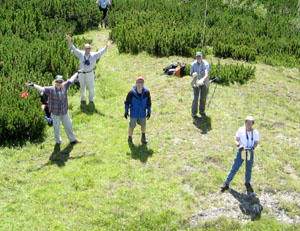
|
|
However, all things come to an end and we must hike back down the mountain. Hum, which path to take now... You can see we are not alone in our journey.
|
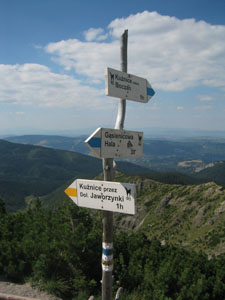
|

|
|
On my way down I encountered a couple of relaxed kite fliers... or were they shepards who had lost their flock? In any case, these types of funded academic exchanges help to further research and teaching, as well as provide documentation of the environment and fond memories.
|
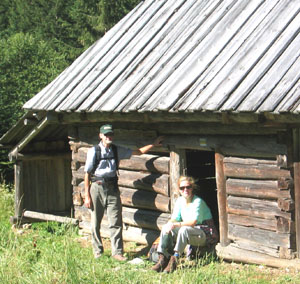
|
And after a day of work, we enjoyed great conversations and terrific Italian-Polish food! We enjoyed each encounter with Polish sheep cheese, piwo, wine, krówka, chocolate, ice cream, and the like!
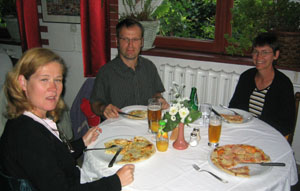
|
